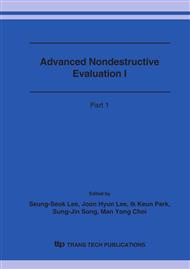p.1213
p.1217
p.1221
p.1225
p.1229
p.1233
p.1237
p.1241
p.1245
Determination of Tillage Depth Based on Physical Properties of Soil for Rice Production in Korea
Abstract:
Compaction is becoming a great concern in crop production and the environment. Recently, three has been a need of field management based on site-specific conditions to improve sustainability of agriculture and reduce environmental damage. In the study, soil management or tillage depth was recommended nondestructively based on cone index profiles for typical Korean rice paddy fields. Field variables related to tillage, soil strength, rice growth, and other soil physical properties showed considerable spatial and vertical variations as well as significant (α<0.1) correlations among them. Cone index profiles observed also varied by field sites, and maximum cone index and depth to the maximum cone index showed significant (α<0.1) correlation with tilled depth as well as rice growth and other field variables. When soil management was recommended based on CI measurements, 13.4, 16.8, and 95.3% of the total surveyed areas, and 10.6, 18.9, and 51.6% of the total soil volume were chosen for management depth of 10, 20, 40 cm, respectively, indicating that soils of many field sites would not restrict rice growth. It was concluded that the concept of site-specific soil management based on soil conditions could save labor, time, machine use, and energy.
Info:
Periodical:
Pages:
1229-1232
Citation:
Online since:
October 2006
Authors:
Price:
Сopyright:
© 2006 Trans Tech Publications Ltd. All Rights Reserved
Share:
Citation:


